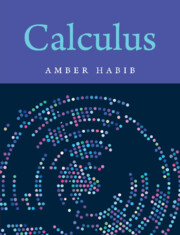Book contents
Summary
When calculus is applied to problems of subjects like physics and economics, it usually leads to equations involving the first and second derivatives of functions, and the task is to recover the original function from these equations. If the derivative is completely known and is continuous, we can use the second fundamental theorem
However, we usually have only a relation between the function and its derivatives rather than a full knowledge of the derivative. For example, we may know that f (x)= f (x)2 for every x. So, we need to find more ways of relating information about f with information about f .We already have two important instances: Fermat's theorem and the monotonicity theorem. In this chapter we will explore several consequences of these results. The payoffs will be new techniques of calculating limits (§6.2), approximation of functions by polynomials (§6.3), use of integration to measure arc length, surface area, and volume (§6.4), and error estimates for numerical calculations of integrals (§6.5). Sections 6.2 and 6.3 are required for the final two chapters on sequences and series, while sections 6.4 and 6.5 are important for the applications of calculus.
Darboux's theorem says that if a function f is differentiable on an interval then f will have the intermediate value property on that interval. Thus, f cannot have a jump discontinuity and it behaves like a continuous function in some ways. Nevertheless, it need not be continuous or even bounded.
As an example, consider the function defined by f (0) = 0 and f (x) = x2 sin(1/x) when x ≠ 0. This function is differentiable at non-zero points by the chain rule. It is also differentiable at zero by a direct calculation:
Thus, f is differentiable at every point. However, f is not continuous at zero: which does not exist.
We can modify the above example slightly to get a function that is differentiable but whose derivative is not bounded. Define g(0) = 0 and g(x) = x3/2 sin(1/x) when x ≠ 0. We have
We say f is continuously differentiable on an interval I if it is differentiable on I and f is continuous on I.
- Type
- Chapter
- Information
- Calculus , pp. 217 - 264Publisher: Cambridge University PressPrint publication year: 2023



